Far too often, SEO professionals struggle to showcase their work in a way that truly resonates. Reports and dashboards may present the data, but without a compelling story to tie it all together, they fail to engage stakeholders or secure the buy-in needed to advance SEO initiatives.
Even the most impressive data loses its impact when it lacks context or a clear narrative. As a result, the value of SEO efforts remains hidden, leaving stakeholders uninspired and opportunities untapped.
At its core, SEO storytelling is about transforming raw numbers into a persuasive narrative that highlights achievements and aligns with organizational goals.
We believe every client can master this skill, gaining the support and recognition their SEO strategies deserve. All it takes is learning how to craft stories that connect data to meaningful outcomes.
Table of Contents:
- What is Storytelling for SEO?
- Key Components of SEO Storytelling
- Steps to Creating a Strong SEO Story
- Overcoming the Challenges of SEO Storytelling
- The seoClarity Storytelling Framework
What is Storytelling for SEO?
SEO storytelling is the practice of transforming raw data, metrics, and results from SEO initiatives into a compelling narrative that resonates with stakeholders. It’s about going beyond presenting numbers in reports or dashboards and instead crafting a story that clearly communicates the impact of SEO efforts on business goals.
Fairy tales are excellent examples of what makes a compelling story. They have an intriguing beginning, an engaging storyline, and a thrilling ending. Though the specific elements involved in the story might vary, the basic structure stays the same: everything was good, something bad happened, then the problem was solved and everything was good again.
That’s what we need to be able to translate into SEO - the better we can get at explaining our SEO story, the more we can get others engaged.
You can do this by similarly structuring your research: here’s where you started with your SEO, here are the applied strategies, and here is the outcome and where you stand today.
The Importance of Storytelling in SEO
Without storytelling, data can feel overwhelming or disconnected from real-world outcomes. A well-crafted SEO story bridges that gap, showing the value of your efforts and boosting credibility.
By blending insights with context, SEO storytelling turns complex data into an engaging report that connects with audiences on an emotional and strategic level, making it easier to secure buy-in, resources, and organizational support for SEO initiatives.
Types of SEO Storytelling
Reporting, or storytelling, in SEO falls into one of two categories: recurring or project based.
Recurring reporting involves delivering regular updates on the performance of an SEO strategy over a consistent timeframe, such as weekly, monthly, or quarterly.
Executives likely want to see reports quarterly or monthly whereas stakeholders prefer weekly or seasonal reporting updates. SEO analysts will want daily reports - they are responsible for making sure the ship isn’t sinking, so they need to receive an update on the story every day.
Project-based reporting, on the other hand, focuses on specific SEO initiatives or campaigns and is delivered upon completion or at significant milestones. Its purpose is to evaluate the success of a specific project, demonstrate ROI, and provide insights for future efforts.
Recurring and project-based reporting complement each other. While recurring reports track ongoing SEO health and performance, project-based reports dive into the results of specific campaigns or actions. Together, they give a comprehensive view of SEO efforts, ensuring both continuous monitoring and detailed analysis of key initiatives.
Key Components of SEO Storytelling
When it comes to telling a strong SEO story that resonates, it's important to include the following components:
- Data Interpretation: Highlighting key metrics and trends while explaining their significance.
- Context: Providing background that helps stakeholders understand why the data matters.
- Connection to Goals: Linking SEO achievements to broader business objectives, such as revenue growth, customer acquisition, or brand visibility.
- Clear Visuals: Using charts, graphs, and dashboards to illustrate the story and make data easier to understand.
- Call to Action: Suggesting next steps or recommendations based on the story to drive decisions and action.
Steps to Creating a Strong SEO Story
To create a compelling SEO story, complete the following steps:
- Cater to your target audience. Consider what your audience is interested in. When sharing a dashboard or report with others in your company, your target audience may not be familiar with all the technical knowledge and industry jargon that goes into developing an SEO plan. Speak their language and condense your findings down to only what your team or client needs to know. For example, your IT team might need monthly reports and understand industry language, whereas your company stakeholders require more frequent reports with language that they can understand.
- Focus on key performance indicators (KPIs) your audience is interested in and avoid unnecessary details that won’t be understood. It's not beneficial to bombard your clients with a ton of data if you can't link them together in a meaningful way. Keep in mind your SEO dashboard is not for you - it’s for others to see the value of your work in a way that they can comprehend.
- Build a well-defined plot. Have a strong beginning, an interesting middle, and a thrilling end. Whether results are good or not so good, your dashboards and reports paint a picture of where you started, what happened, and where you wound up (leaving the door open for a sequel, of course!)
- Deliver an engaging storyline. Keep the data cohesive and specifically note the cause-and-effect relationship between your SEO strategies and your client's results or your brand’s KPIs. Apply all of these elements to create a narrative that is both clear and compelling.
Overcoming the Challenges of SEO Storytelling
SEO reporting often involves manually pulling information from tools like Google Search Console, Google Analytics, and rank trackers, then organizing it all into massive Excel files to share with stakeholders.
At seoClarity, we believe your time is better spent on execution, not repetitive tasks like research, analysis, and reporting. That’s why we’ve designed a platform that automates these time-consuming processes, giving you the tools to focus on what really matters: prioritizing and executing impactful SEO strategies.
seoClarity is also the only enterprise SEO platform to offer daily reporting, delivering up-to-date insights to analysts and stakeholders. These daily updates ensure you’re always working with the latest data to make informed decisions and drive results.
The seoClarity Storytelling Framework
To create a story-driven client SEO report, we begin with four simple questions:
- Where are we now?
- How did we get here?
- Where do we want to be?
- How do we get there?
All of these questions can be addressed in seoClarity through a single, well-designed dashboard tailored to your audience. For example, let’s say you're creating a report for your executive team. Here's how to present the answers in a way that resonates with their priorities and decision-making needs:
- Where are we now? The current state of affairs when it comes to visibility in the SERP, traffic, conversions, and so on.
- How did we get here? Trended reports show how something came to be where it is. Rankings, traffic, year-over-year - these trended reports are bound by time to display the start (where are we now?) and the journey (how did we get here?).
- Where do we want to be? Compare your share of voice of rankings, estimated traffic, search visibility, and more against your competitors to see who is outperforming you from a competitive standpoint.
- How do we get there? Actionable Insights, or client-created tasks, are a great way to highlight how we plan to get where we want to be.
Below, I'll go into more detail on how to answer each question within the platform using the storytelling framework.
Where are we now?
We have a couple of ways to answer this question, but our favorite way to do this for executives is with the Research Grid — an unbiased data set that tracks 270 million keywords (and counting). This includes every keyword used to find the client's web page.
While some SEOs focus only on those keywords for which the company ranks very highly, an unbiased view looks at all of the keywords to provide a realistic picture and introduce you to potential opportunities.

How did we get here?
Research Grid Trend, using either the 6-month or 12-month view, answers this question simply for any executive team. With this, viewers can see the trend graph of how we got to where we are presently over a set period of time.
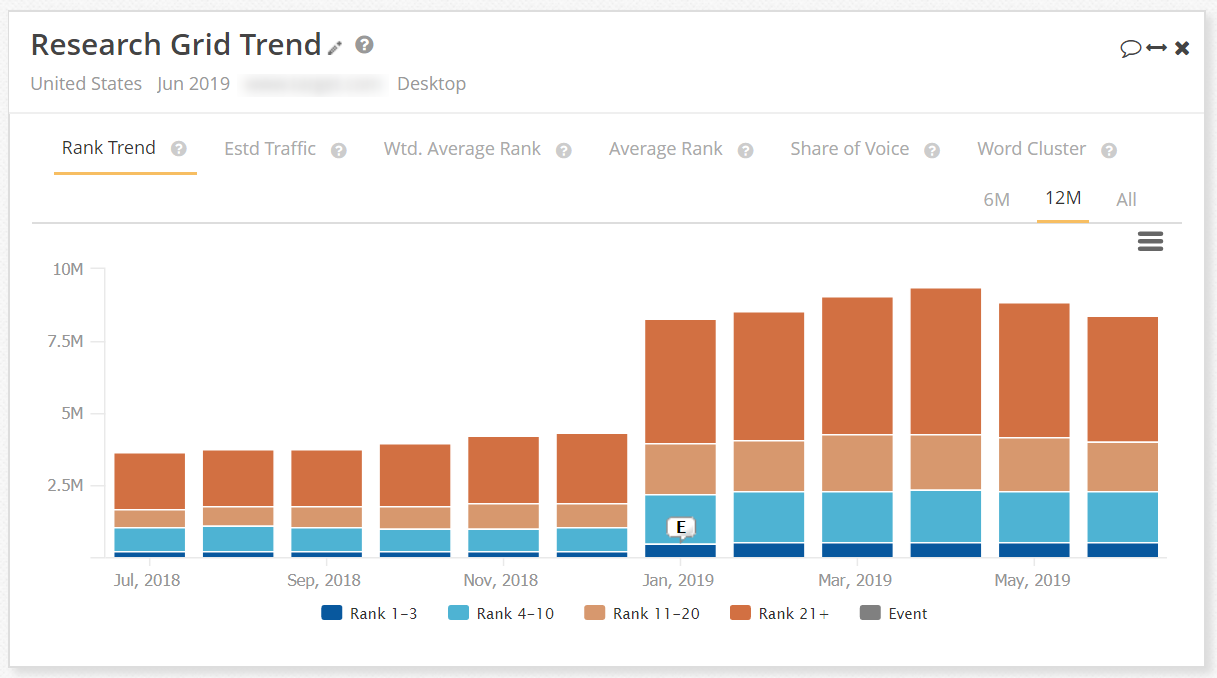
Where do we want to be?
A Content Gaps Trend comparison shows executives where you and your competitors are ranking to determine new opportunities to target against the competition.
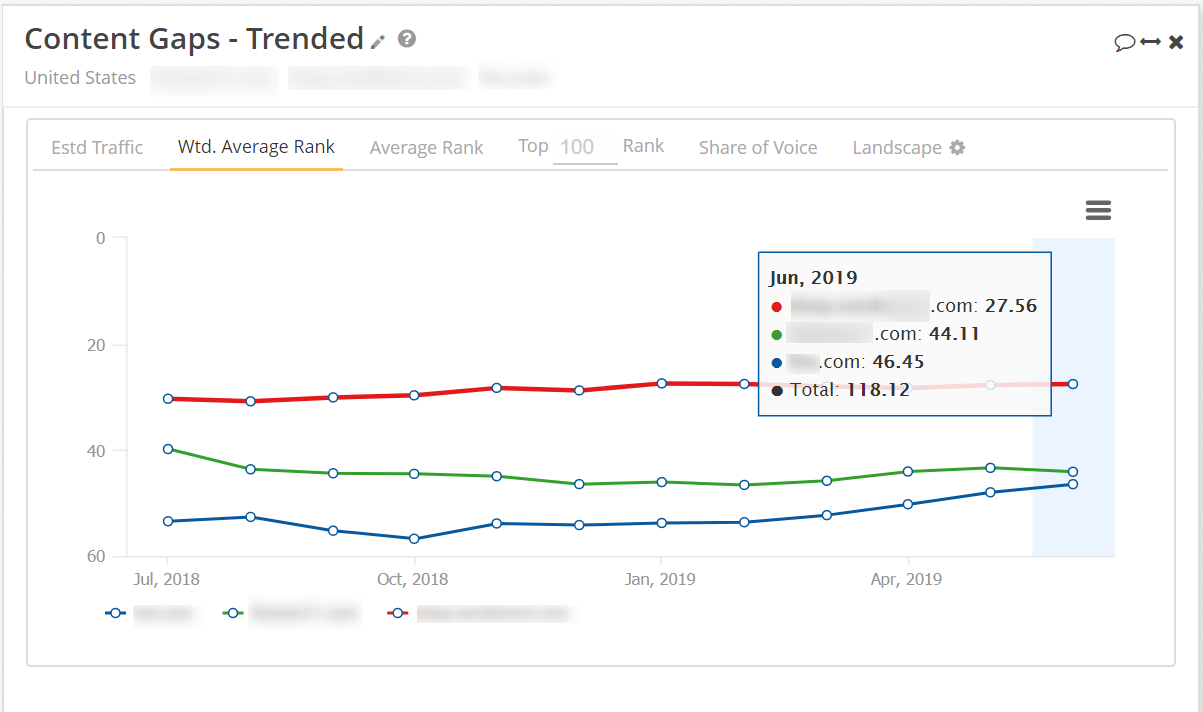
Now with the above storyline we have created, we want to tie all of the metrics together. We might say,
“Over the last 12 months, with the addition of new keywords we are tracking, we’ve seen our rankings improve, but our search visibility remain flat. However, our closest competitors have dropped in weighted average rank in this same amount of time, and therefore consider our steady growth to be quite strong.”
To drive this point home, consider showing the YoY Summary in your dashboard. This gives a high-level picture of how your brand is performing better over this time last year.
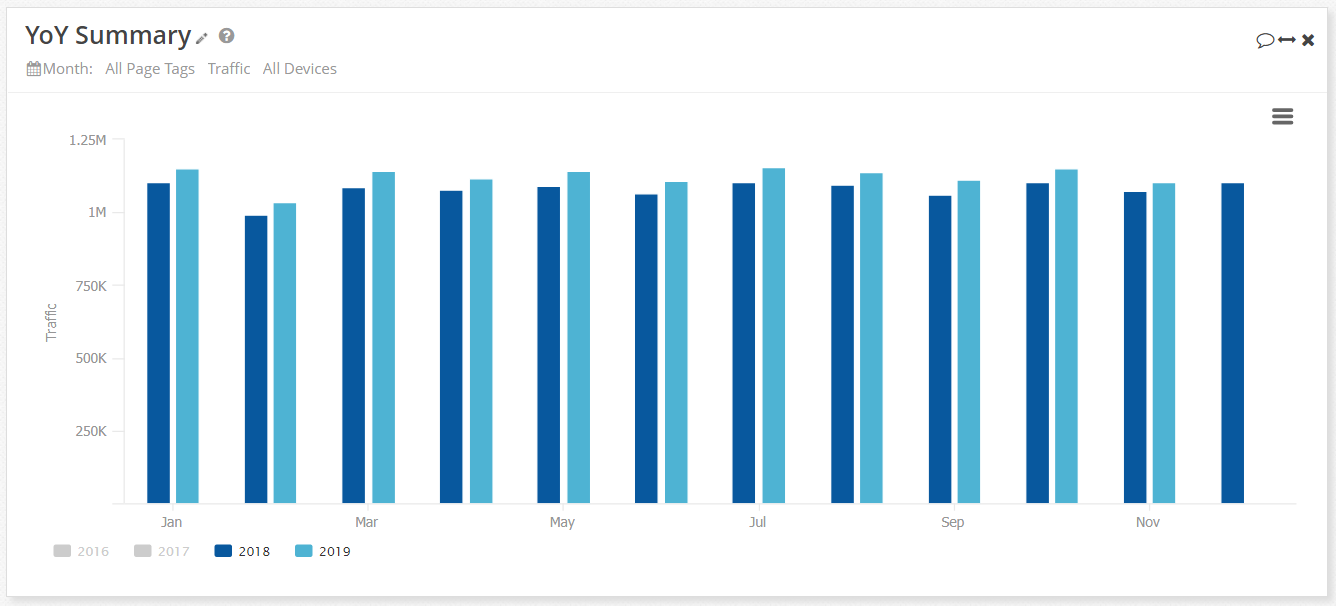
How do we get there?
So, what’s left to do? After showing the success of what you’ve executed, you can then share the Actionable Insights of what you need to do to continue growing toward where you want to be.
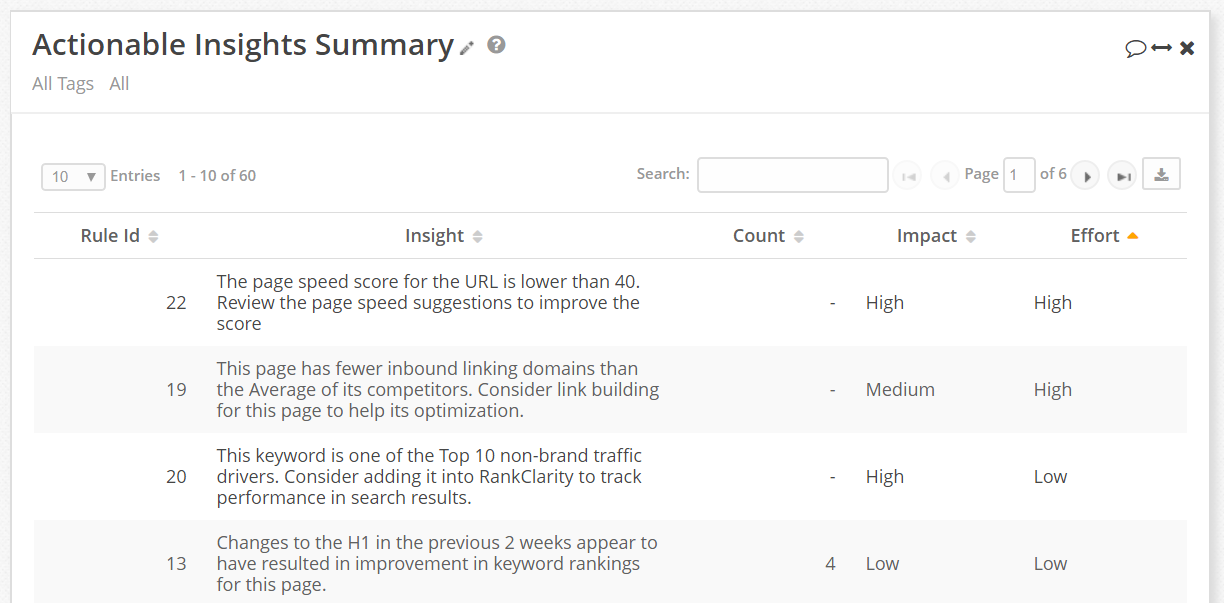
You can sort these insights by impact or effort to determine the priority of these tasks. While this isn’t relevant to all clients, it’s a good list of all the things you need to address to continue your success or boost overall results.
Conclusion
Above, we have laid out a very succinct, executive-level SEO story that can be told in 15 minutes or less. In the example of an executive team, they don’t need to know about backlinks. They don’t need to know about every little technical detail of your site's health. If they want to know - great, you can share that with them. Otherwise, it’s best to leave out unnecessary information and apply only what needs to be shared with each specific audience.
Recommended Reading: Simple SEO Reporting for the C-Suite
Fortunately for our clients, seoClarity provides access to all SEO data, metrics, and capabilities—completely free of artificial limitations—through a single, centralized view. With over 100 customizable visualizations, you can craft as many stories as needed to engage every member of your team. Even better, we’ve removed the guesswork from dashboard creation, empowering you to focus more on execution and driving SEO success rather than design.
For more examples of our custom SEO dashboards for different teams with different goals, download our free dashboard guide that highlights a few of the best stories you can capture with seoClarity.
Editor’s Note: This series is designed to showcase the power of our platform and the solutions our clients are raving about, according to our extremely knowledgeable Client Success Team. If you’re not a client yet, book a demo with us today to see our platform in action!




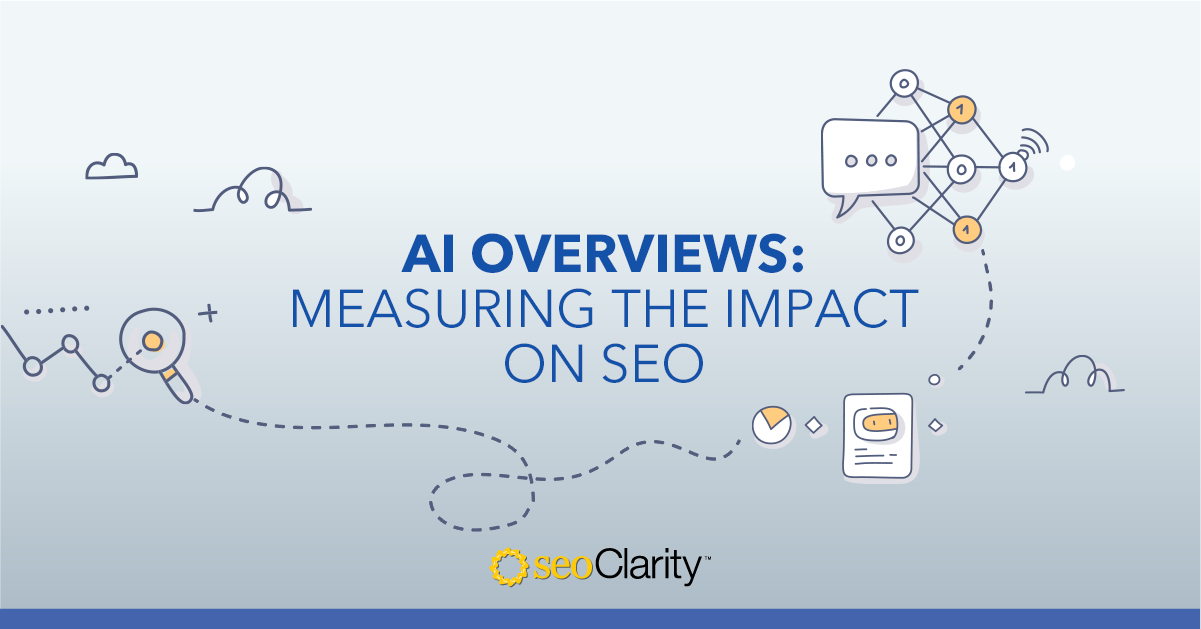
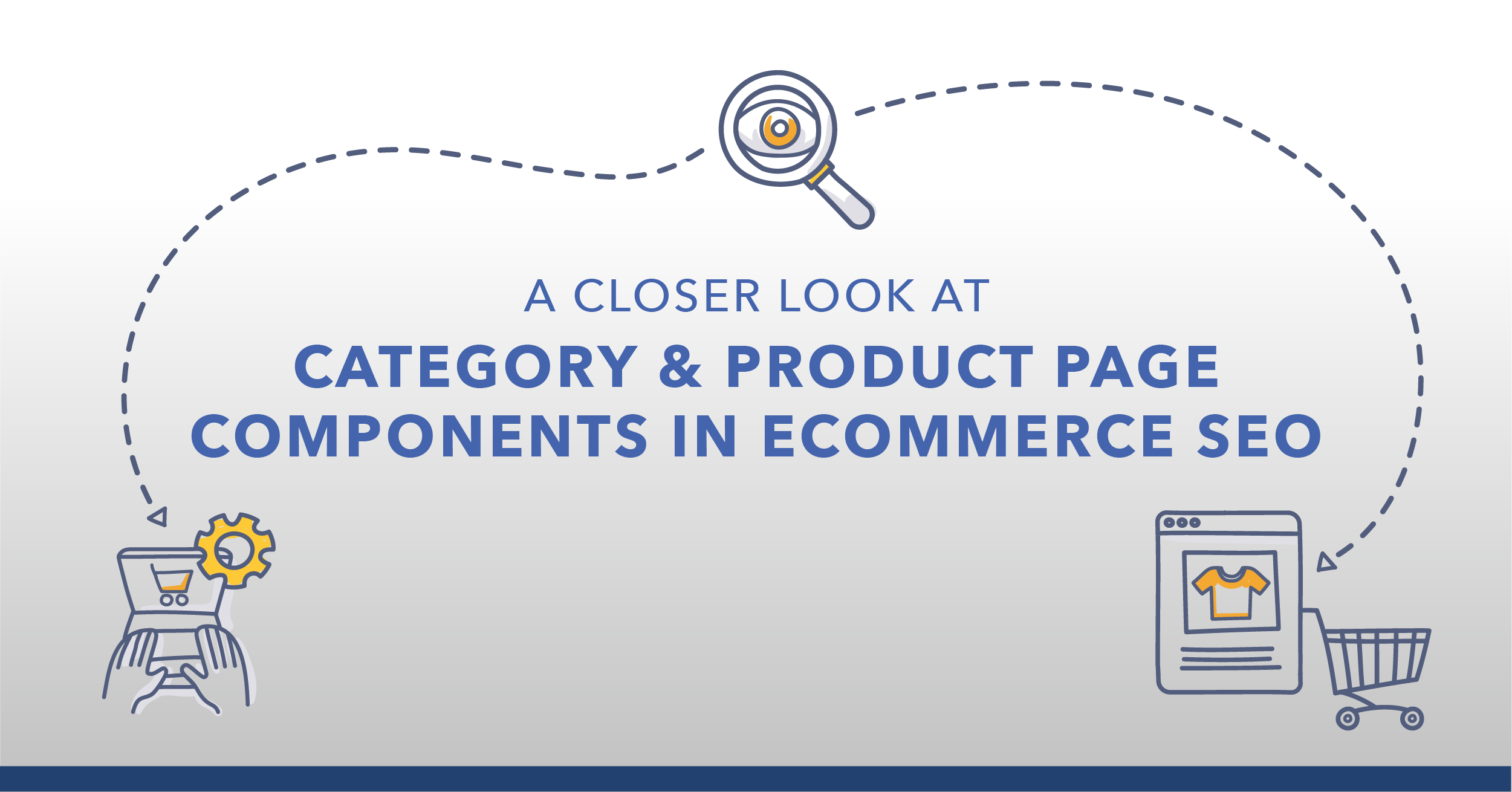

6 Comments
Click here to read/write comments